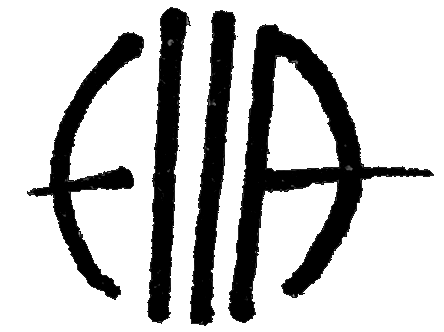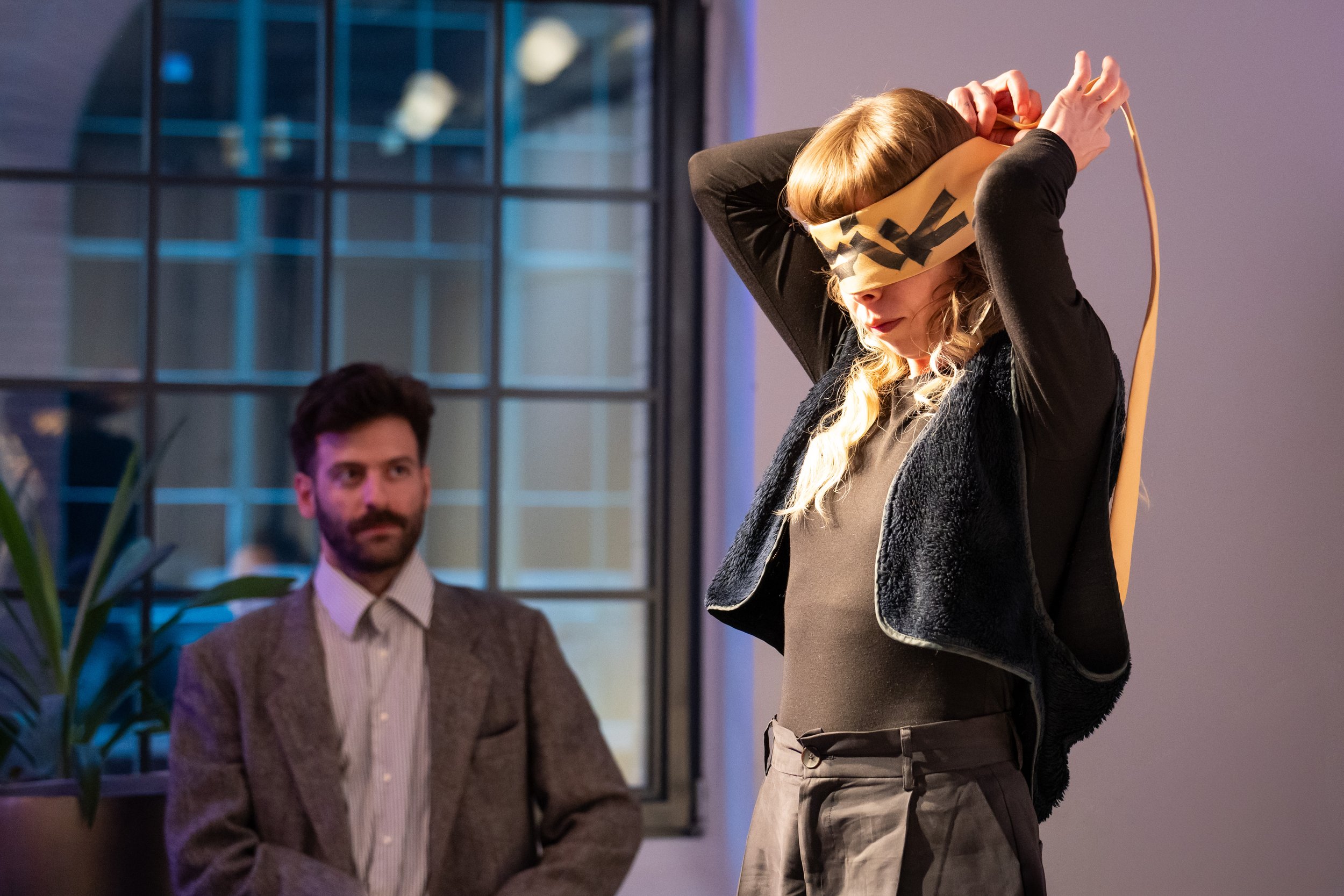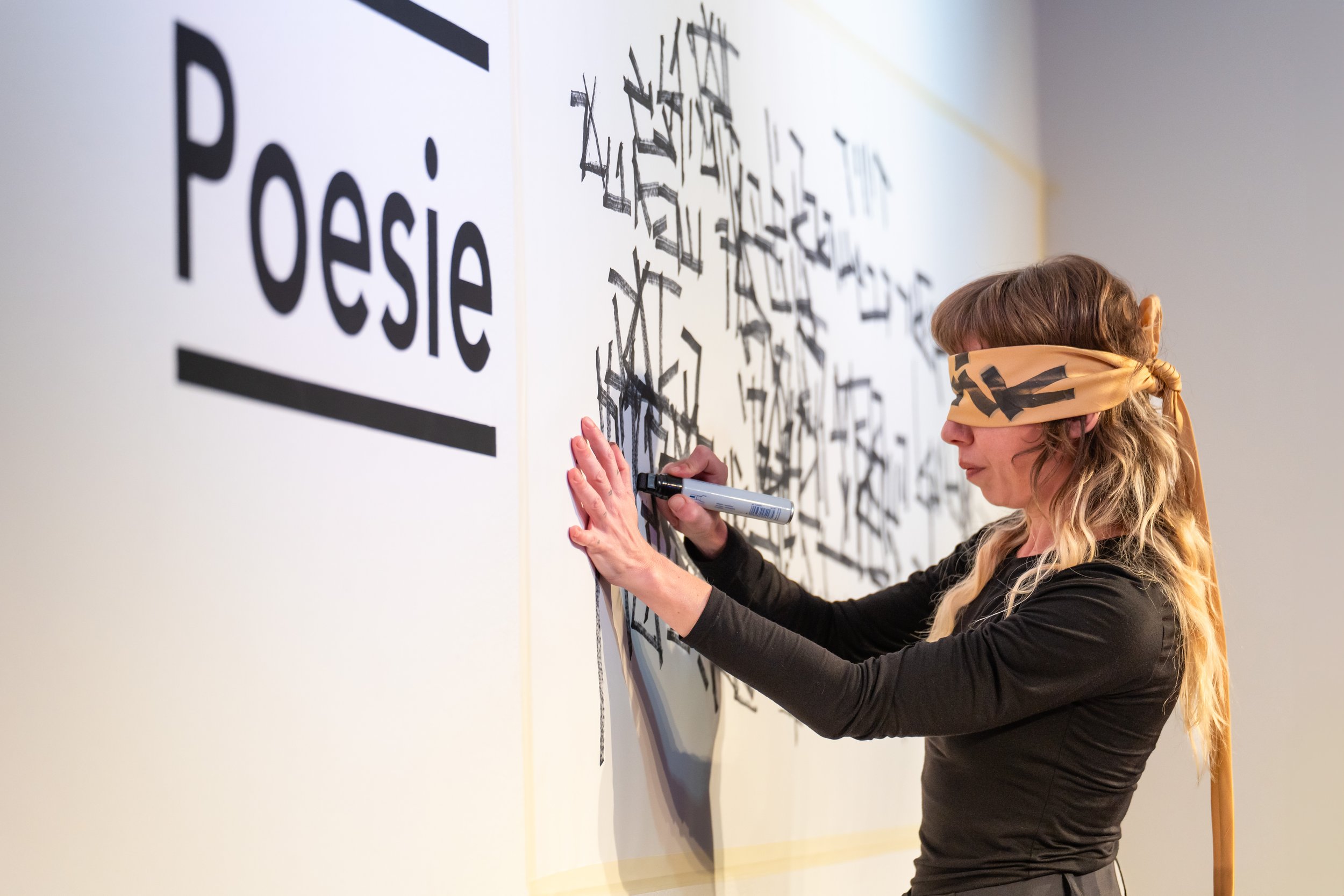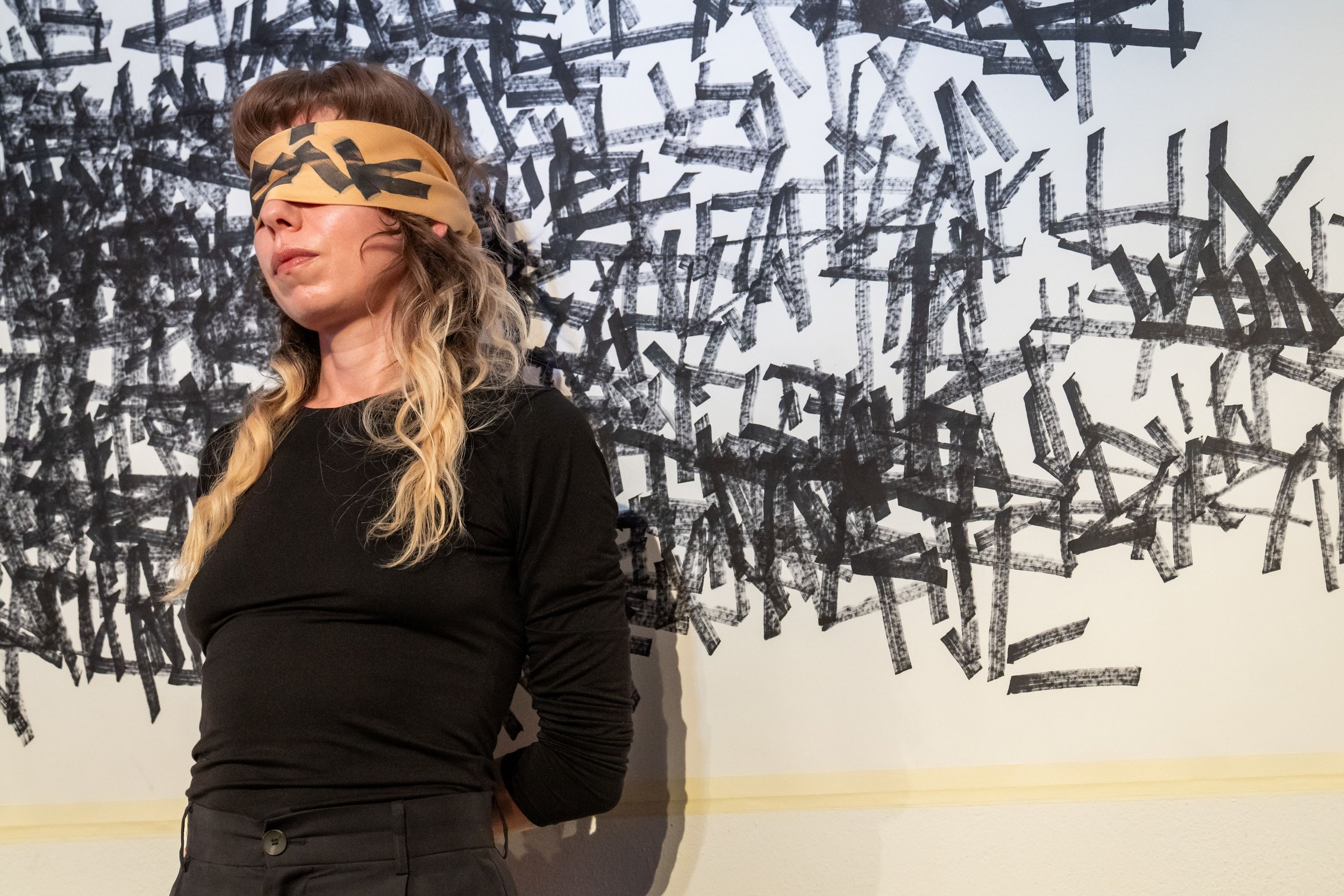Oygn
A performance in Haus für Poesie
2024
Oygn
Exploring Cultural Memory and Identity Through A Multisensory Encounter.
Debuted on April 14th, 2024 in Haus für Poesie, Kulturbrauerei, Berlin
This performance piece envoleves the audience in an exploration of sensory deprivation, coupling the act of creation of a large-scale drawing with the absence of sight. The artist, blindfolded in total darkness for approximately two hours, engaged in the task of writing on the stage's rear wall, solely guided by hearing and haptic perception of the space. This was set against a reading by three contemporary Yiddish poets—David Omar Cohen, Daniel Kahn, and Beruriah Wiegand—who recited their poetry at the forefront of the stage.
The piece delves into various dimensions of blindness—moral, historical, cultural, social, spiritual, emotional, and concerning the future. It challenged the audience to reconsider their perceptual biases and highlighted the complexity of navigating 'unseen' realms that shape our consciousness and cultural dialogue.
The performance serves as a meditation on the ease with which society may choose ignorance over the discomfort of awareness. Through its exploration of Yiddish literary voices, "Oygn" probes the affiliations with this historically rich yet increasingly obscure language, emphasising the cultural and linguistic losses we face.
The act of writing and overwriting texts upon one another also serves as a comment on cultural erasure. The layered approach not only physically manifests the gradual loss of visibility of individual words but also symbolically represents how cultural narratives and languages can be obscured or overwritten by dominant forces. As each layer of text adds complexity, it simultaneously obscures the layers beneath, mirroring how historical and contemporary processes can silence diverse cultural voices. This artistic choice highlights the precariousness of cultural memory and identity, emphasising the ongoing struggle against the forces that seek to diminish or erase minority cultures. The visual result—illegible, merged text—evokes a poignant commentary on the loss and resilience of cultural heritage, urging viewers to reflect on what is retained and what is lost in the cultural narratives that survive through time.
The tangible final result of the performance is a large-scale drawing, a manifestation of the evening's auditory and conceptual experiences. This artwork, created in the absence of sight, emerges as a coherent yet abstract accumulation of text. Each stroke and character, influenced by the rhythmic cadence of poetry, coalesces into a visual representation of the spoken word. The drawing stands not merely as an artistic artefact but as a commentary on perception and understanding, transforming the ephemeral sounds of verse into a lasting visual dialogue with the viewer. This visual component underscores the performance's exploration of visibility and invisibility, offering an enigmatic testament to the complexities of communication and cultural memory.
Photos: © Haus für Poesie, Natalia Reich
















